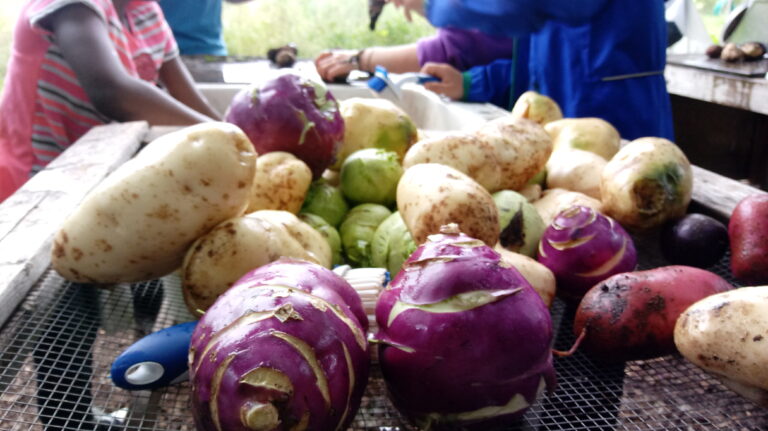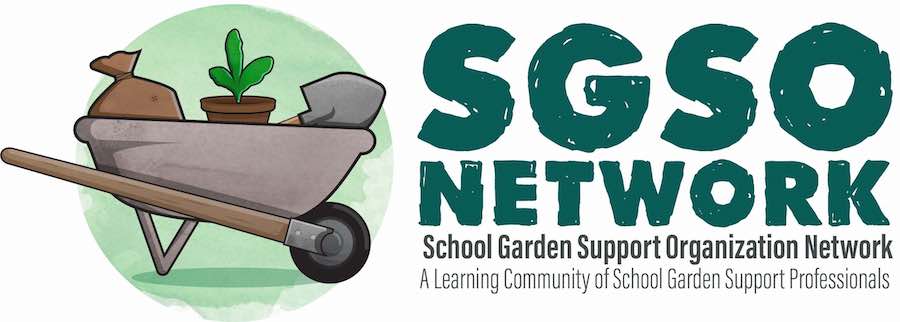Member spotlight
Travus Maloney
Education Manager and Goodman Youth Farm Manager
Rooted – Madison, WI
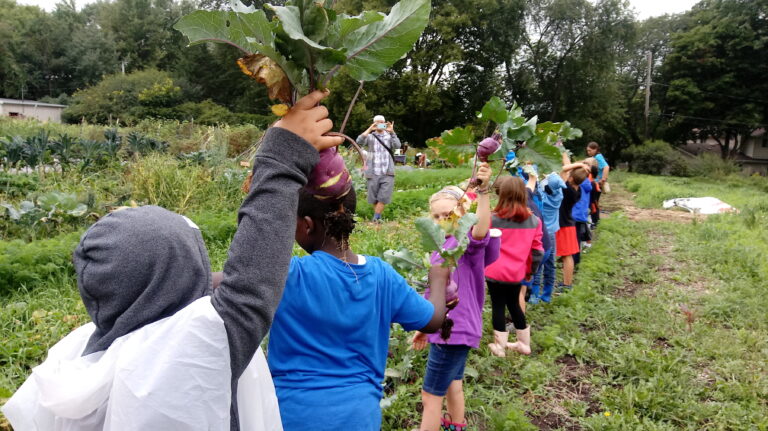
Read on for an interview with Travus focused on how the Goodman Youth Farm partners with their local food pantry at the Goodman Community Center. If you’d like to ask Travus additional questions or share your best practices, you can email him at travus@rootedwi.org.
Please give us an overview about your garden program and how it operates.
The Goodman Youth Farm is part of a non-profit organization, Rooted, operating all across Madison, WI. It is on roughly a half-acre of land that’s currently owned by the Madison Metropolitan School District. We have a partnership agreement with them, which means that we are stewards of the land while they handle certain things like the water, utilities, and some of the groundskeeping. Our neighbor is Kennedy Elementary School. We see Kennedy students twice per year in grade levels K-5, once in the spring and once in the fall. We also serve as a field trip site for Madison schools and beyond, serving kids pre-K through high school and beyond.
We have two fields in cultivation for our youth programs with row beds that are around 50-feet long and 30 inches wide. It’s in those spaces where we involve the youth in bed, prep, planting, weeding, and on some occasions, harvesting. We really involve them in all aspects of our farm management. We also have about 20 community garden plots that we rent out to community members.
Tell us about the relationship between the community and the garden, specifically when it comes to sharing your produce.
Due to our funding source, the Goodman Foundation, we are closely connected to the Goodman Community Center, which houses a food pantry. Most of the produce we grow, that’s not used in our programs or sent home directly with students or staff, goes to the food pantry. The harvest totals fluctuate throughout the years as we try different crops and focus on different things. I’d say we were averaging about 2000 pounds per year in the past ten years or so. A half-acre is relatively small compared to a lot of farms, but for a hand scale and what we do, we end up with quite a lot of excess produce. An important part of our field trips is harvesting, packing, and letting kids know that the food that we grow has a destination and it’s going someplace in their community.
What's the breakdown of how you use you the produce? How much is taken home by students and how much is donated to the food pantry?
As part of our field trips, we always have a cooking station where we’re using produce right from the garden. Quite a lot of it goes directly home to students. When buses are okay with having a bunch of vegetables on their bus, we will send it home when we can. We’ll allow kids to take home a grocery bag full of produce, enough for a meal or two at home. That makes it difficult to get a specific breakdown of harvest totals just because we don’t like to interrupt the flow of picking and getting kids on the bus and getting home. But I would say just estimating, at least 90% is going to the food pantry.
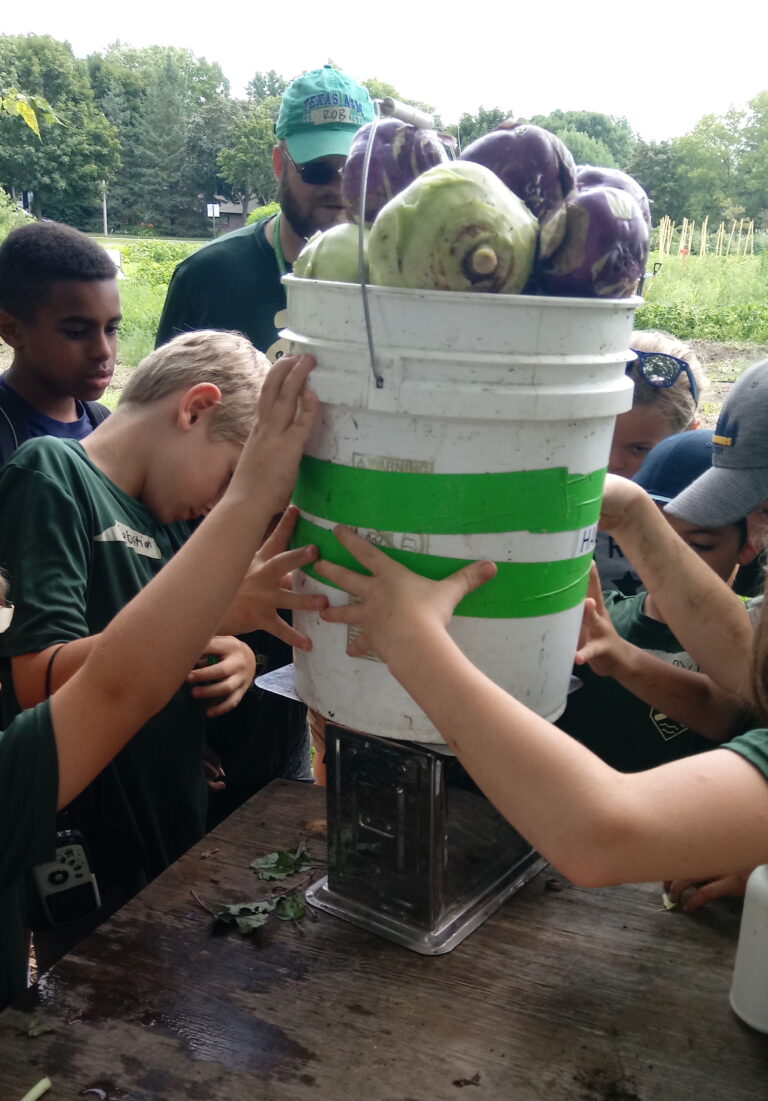
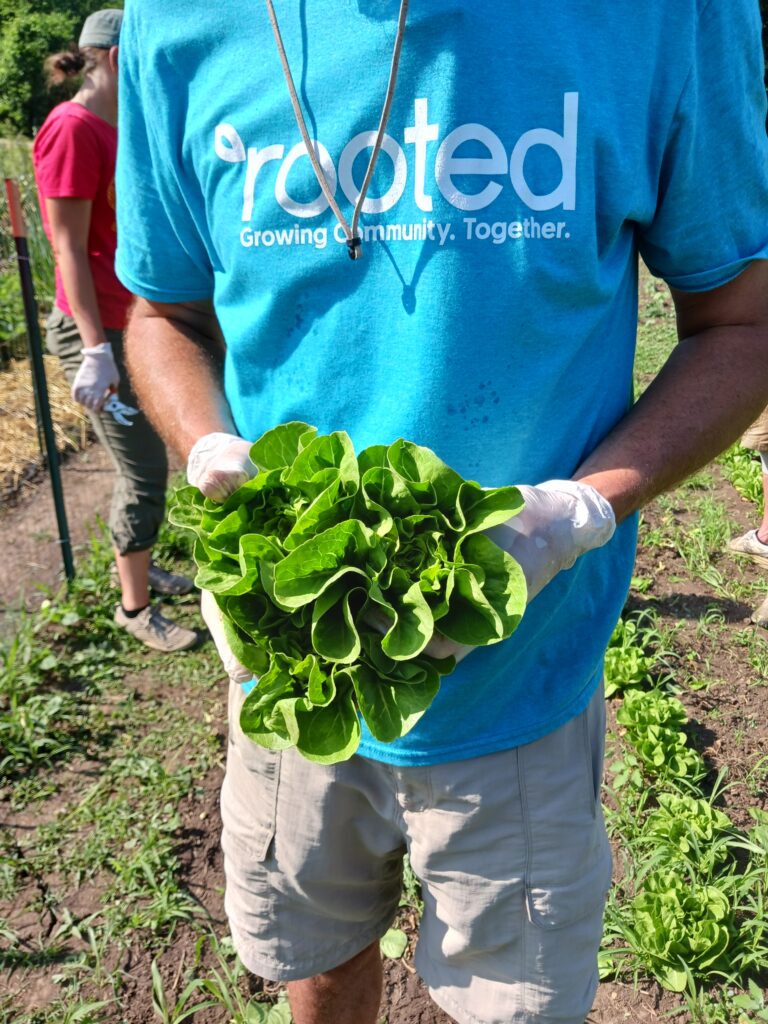
What does the process entail when students take produce home?
Typically, we do it at the end of the field trip. Oftentimes, we’ll take a “tasty tour”: we’ll do a tour of the farm and kids will sample things as we walk around. Cooking is also an integral part of our field trips. Towards the end of the field trip, we’ll leave 10 or 15 minutes before they go on the bus and will offer up the things that are available for harvest. Oftentimes, either something in the garden or something in the kitchen may have inspired them, so they’ll want to take home whatever ingredients they may have used or tasted. Sending kids home with a recipe is also great, as often they want to repeat that recipe and share it with their families. It can get a little crazy because there’s many things to harvest in many different groups of kids, so we’ll just break up into small groups and give them some guidelines on how many to harvest. Usually enough for a meal or two enough to share with their family.
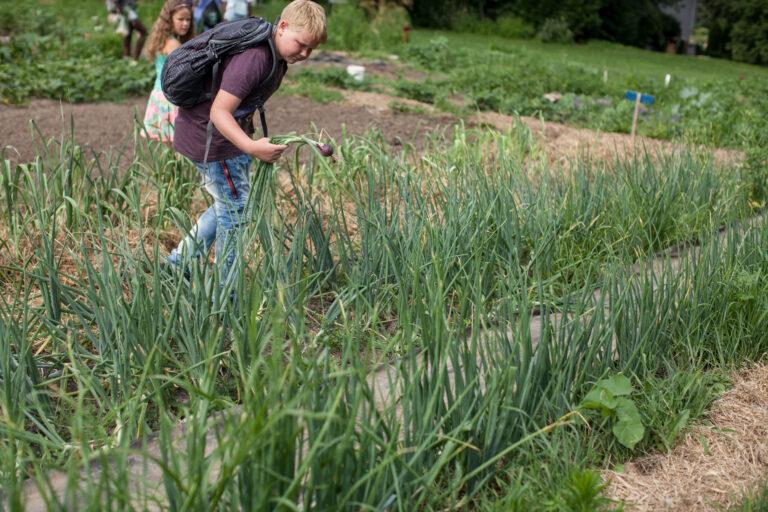
How does the relationship with the food pantry work?
Yeah, it’s been pretty nice as it’s fairly hands off. Our relationship is such that we harvest our stuff, oftentimes with students, and then I, or another person from our staff, drives it over to the pantry, about a mile away. I check in with them every once in a while, to ask, “Is this stuff getting used? How are we packing it? Is there any way you would like us to present [the produce] differently?”. There are times where I’m unsure. I might have 100 pounds of fennel or some crop that maybe is not as popular or as useful. In that case, I might have to spread out how much I send to the food pantry. Fennel is a great crop that we like to grow, and it’s easy to grow. The bulb and the fronds are edible, you can get seeds from it. But as far as a food pantry item, we decided not to plant a 50-foot row of it. We only planted a small raised bed [in order] to make room for something like potatoes or more peppers, which I know are popular pantry items and have a pretty good shelf life – I can store it for a while without having to worry about it going bad. We’re working with one just normal refrigerator and don’t have a walk-in. A lot of the puzzle on my end is figuring out when to harvest it and how to get it to the pantry before it bakes in the sun or just doesn’t have enough room in our fridge.
How often do you take produce over to the pantry?
Once we get into July, August, September, we deliver at least once a week, maybe more. They have pantry days three days a week. I do my best to drop produce off before the pantry starts or the day before the pantry. But it also depends on when we have kids out and when we’re able to harvest because we are only on-site Tuesday, Wednesday, Thursday.
What food safety handling procedures do you follow?
We use harvest tables we built with a wire screen and a plastic washtub. Depending on the crop, for something like kale or collard greens, we just do a quick hydro-cool and dunk in a tub of cold water. For something like potatoes, rather than have kids scrub those, we might let them sit for a while and then just do a light scrubbing with a soft brush – so that we don’t risk damaging the skins. But there can be a line. You don’t want too much handling, depending on the age of the kids and depending on the crop. We have groups of sometimes 30 or 40 kids, so at times, we do want to minimize the number of hands that are touching our produce. [They do use] our hand washing stations. In most cases, we’re harvesting and sending it to the pantry that same day, because of our lack of cooled storage space.
We’re not certified organic or in the good agricultural practices, but we have those resources available and a lot of our staff have had those trainings. We do not pursue those certifications primarily from a cost perspective, and we just don’t necessarily have the people and time resources to follow through with the inspections.
